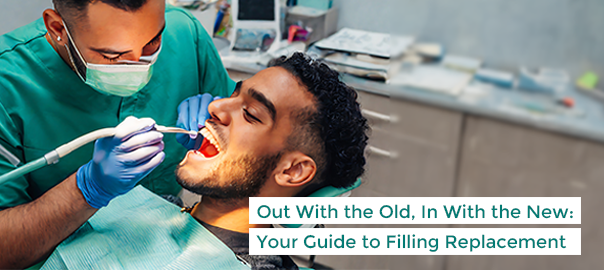
Out With the Old, In With the New: Your Guide to Filling Replacement
Table of Content
What Are Dental Fillings?
Dental fillings are bio compatible materials used to restore minor tooth decays, damage or fractures. They act as barriers by sealing off the spaces from where bacteria can enter. Some of the common filling materials are composite, resin, GIC, porcelain, amalgam etc.
Dental fillings have proven themselves as a common solution for treating cavities and damaged teeth. While being reliable, durable and “long-lasting”, they don’t last forever and may need replacement with time. But how do you understand that it’s time to replace your old fillings? What process does it involve? Keep reading to understand it from the experts at Clove.
When to Replace Fillings
1. New decay:
If decay develops around an existing filling, replacement is necessary to prevent further damage.
2. Damage to the filling:
Cracked, chipped, or worn-down dental fillings should be replaced to maintain tooth protection.
3. Pain or sensitivity:
Persistent tooth pain or sensitivity may indicate a problem with your filling.
4. Changed tooth shape:
If you are noticing changes in your tooth’s shape due to wear or damage, the filling may no longer fit properly.
5. Age of the filling:
While fillings last many years, they still aren’t permanent. It is seen that amalgam filling last somewhere between 5-25 years, while composite lasts 5-15 years.
6. Aesthetic concerns:
If you have old, visible metal fillings, you can always opt now for tooth colored alternatives. This gives you a more natural look.
7. Material concerns:
Some people opt to replace amalgam fillings due to concerns about mercury content, although dental associations consider them safe.
How Fillings are Replaced
The process of replacing a filling is similar to getting a new one:
1. Your dentist will examine and assess the degree of destruction and will numb the area around the tooth, if required.
2. The old filling and any decayed tooth material are removed.
3. The tooth is cleaned and prepared for the new filling.
4. A new filling material is applied and shaped to fit your tooth.
5. The filling is hardened and polished.
Getting regular check ups done is crucial for monitoring the state of your fillings. Your dentist will always detect issues early on through visual examinations and x-rays. They ensure all steps are aimed at keeping your teeth healthy and protected. If you are concerned about your old fillings, contact Clove Dental today.
Leave a Reply
Leave a Reply
Explore More Similar Posts
Explore More Blogs


Leave a Reply